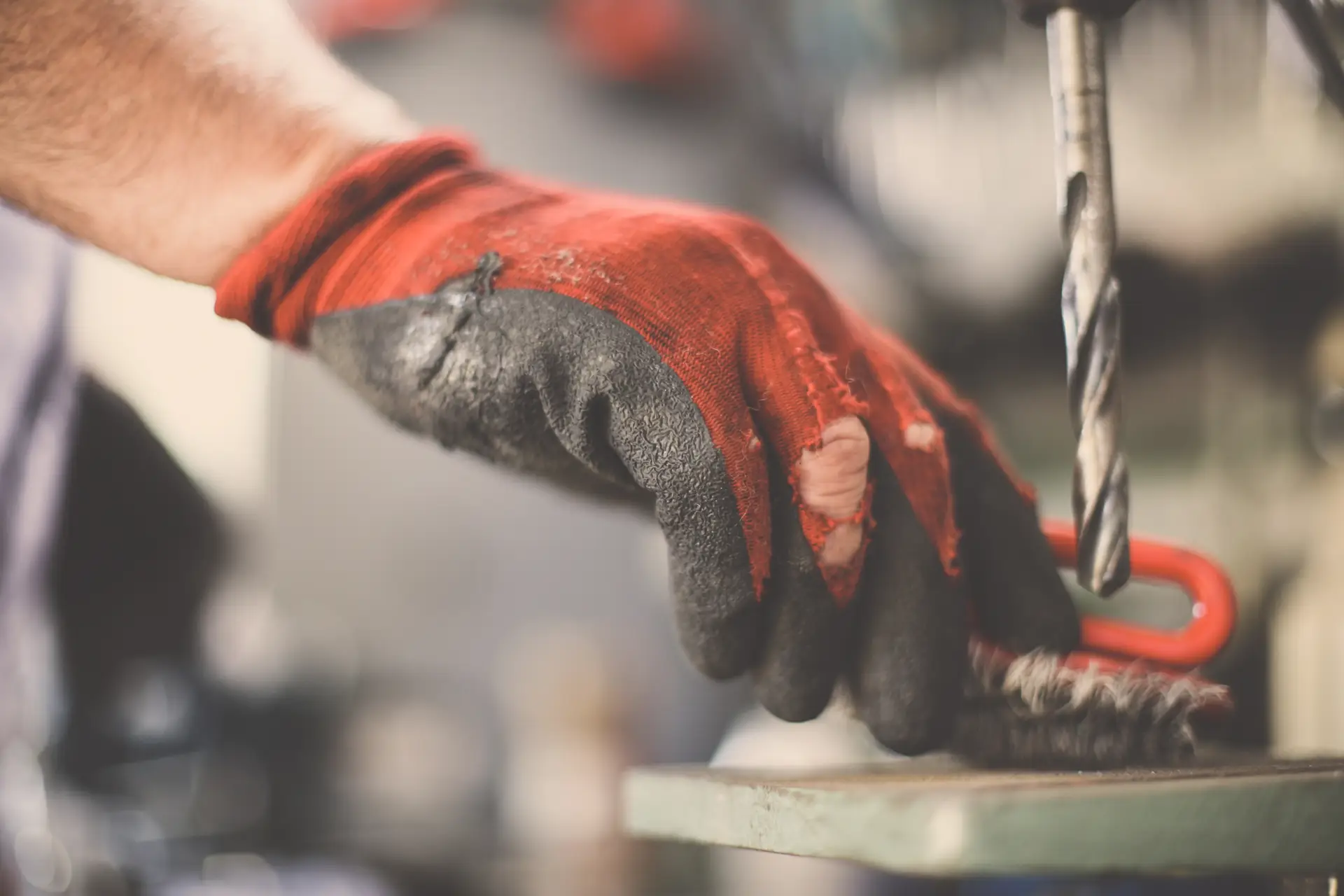
Woodworking can be risky without the right protective gear. Choosing the right gloves is crucial for both safety and precision.
For woodworking, use gloves that balance protection from hazards like cuts and splinters with dexterity for detailed tasks.
Let’s explore the common hazards, the best glove types, and other key considerations to help you stay safe while woodworking.
Table of Contents
- What are the most likely hazards while woodworking?
- What kind of gloves are best for woodworking?
- Can you wear gloves when woodworking?
- What gloves are good for wood splinters?
- What are the safety standards for woodworking?
What are the most likely hazards while woodworking?
Woodworking exposes you to several risks, including sharp tools and rough materials. Awareness of these hazards is the first step to staying safe.
The most common hazards in woodworking include cuts, splinters, abrasions, and chemical exposure from finishes or adhesives.
Even minor injuries like splinters can disrupt your workflow. On the other hand, cuts or abrasions can lead to serious complications without the right protection.

Key Woodworking Hazards
| Hazard | Cause | How Gloves Protect |
|---|---|---|
| Cuts and Abrasions | Sharp tools like saws, chisels | Cut-resistant materials block sharp edges |
| Splinters | Handling rough or untreated wood | Tough outer layers prevent penetration |
| Chemical Exposure | Adhesives, finishes, or stains | Chemical-resistant gloves shield skin |
| Impact or Crush Injuries | Dropping heavy tools or wood pieces | Padded gloves absorb impacts |
Real-World Examples
- Scenario 1: Handling untreated planks led to splinters penetrating unprotected hands.
- Scenario 2: A worker using a saw without gloves suffered abrasions from rough wood edges.
- Solution: Both issues could have been prevented with durable gloves tailored to woodworking.
What kind of gloves are best for woodworking?
Not all gloves are created equal. Selecting the right type for your needs ensures maximum safety and comfort.
The best gloves for woodworking are cut-resistant gloves with flexible material for precision and protection.
They protect your hands without hindering movement, making them ideal for working with sharp tools and splinter-prone wood.
Features of the Best Gloves
| Feature | Benefit | Ideal Task |
|---|---|---|
| Cut Resistance | Shields hands from sharp edges | Sawing, chiseling, or carving |
| Grip and Dexterity | Secure grip without slipping | Handling small or smooth items |
| Breathable Material | Prevents sweating and discomfort | Long woodworking sessions |
Specialized Gloves for Woodworking Tasks
- Heavy-Duty Tasks: Opt for thick gloves with reinforced palms for handling heavy or rough wood.
- Precision Work: Choose lightweight gloves with thin layers to ensure accuracy in carving or detailing.
- Chemical Handling: Use nitrile-coated gloves for safe application of adhesives or finishes.
Pro Tips for Choosing Gloves
- Test Fit: Always ensure gloves are snug but not restrictive.
- Material Matters: Leather, HPPE, and coated fabric are reliable choices.
- Certifications: Look for EN388 or ANSI ratings for added assurance.
Can you wear gloves when woodworking?
There’s a common debate about wearing gloves in woodworking. Knowing when and how to use gloves is essential.
Yes, you can wear gloves while woodworking, but ensure they fit snugly to avoid getting caught in machines.
Loose gloves can be dangerous around power tools, so always prioritize well-fitted, task-specific gloves.
Safety Tips for Wearing Gloves
- Avoid Loose-Fitting Gloves: They can get caught in moving parts like drills or saws.
- Use Task-Specific Gloves: Match glove type to the job, e.g., padded gloves for impact protection.
- Regular Inspections: Check for tears or wear that could compromise safety.
Situations Where Gloves Are Critical
| Task | Risk | Recommended Glove Type |
|---|---|---|
| Sawing or Cutting | Sharp tool edges | Cut-resistant gloves |
| Sanding or Polishing | Friction or splinters | Durable but thin gloves |
| Handling Chemicals | Skin irritation or burns | Nitrile or chemical-resistant gloves |
When Gloves Are Not Advised
- Using Power Tools: For tools like table saws or lathes, gloves might reduce control or increase the risk of accidents.
What gloves are good for wood splinters?
Splinters are a frequent annoyance in woodworking, but the right gloves can prevent them effectively.
Gloves with reinforced palms and anti-splinter coating are ideal for protecting against wood splinters.
Durable materials like leather or coated fabric are effective barriers to prevent splinters from reaching your skin.
Top Glove Features for Splinter Prevention
| Feature | Benefit | Example Material |
|---|---|---|
| Reinforced Palms | Blocks penetration of sharp splinters | Leather or nitrile |
| Tight Weave Fabric | Prevents tiny splinters from entering | HPPE or Kevlar |
| Coated Surface | Smooth layer resists splinters | Polyurethane coating |
Popular Gloves for Splinter Protection
- Leather Work Gloves: Ideal for heavy-duty tasks with rough wood.
- Nitrile-Coated Gloves: Great for handling fine, splinter-prone wood.
- Cut-Resistant Gloves: Adds protection from tools while preventing splinters.
What are the safety standards for woodworking?
Safety standards ensure that protective equipment meets reliable criteria to keep you safe in the workshop.
Key safety standards for woodworking gloves include EN388 for cut resistance and ANSI standards for impact protection.
Certified gloves ensure protection against specific hazards like sharp tools or heavy objects.
Breakdown of Safety Certifications
| Certification | Purpose | Key Features |
|---|---|---|
| EN388 | European standard for cut resistance | Cut, tear, puncture, abrasion ratings |
| ANSI/ISEA 105 | American standard for hand protection | Cut resistance and chemical safety |
| Oeko-Tex Certification | Skin safety and non-toxic materials | Safe for prolonged use |
How to Verify Safety Standards
- Check Labels: Look for certification symbols on packaging.
- Request Documentation: Ask suppliers for test reports and compliance certifications.
- Stay Updated: Ensure gloves meet the latest safety standards applicable to your region.
Conclusion
The right gloves protect your hands from woodworking hazards like cuts and splinters. Choose gloves based on the task and prioritize certified safety standards.


